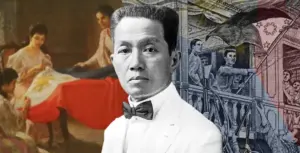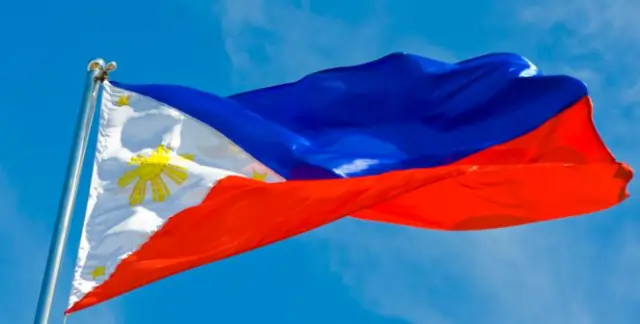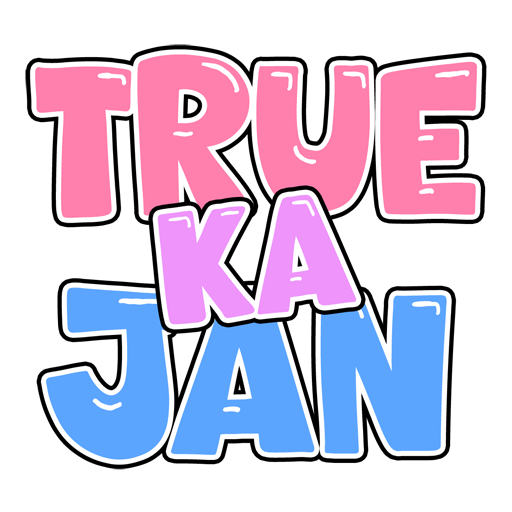
Philippine Independence Day, observed annually on June 12, is a momentous occasion that commemorates the country’s declaration of independence from Spanish colonial rule in 1898. This national holiday is a vibrant celebration of Filipino heritage, resilience, and the enduring spirit of freedom. From colorful parades to heartfelt ceremonies, Filipinos worldwide honor their ancestors’ sacrifices while embracing the rich cultural tapestry that defines the Philippines. This article explores the historical significance, traditions, and modern celebrations of Philippine Independence Day, offering a deeper understanding of why this day holds a special place in every Filipino’s heart.
The Historical Roots of Philippine Independence Day
The story of Philippine Independence Day begins in the late 19th century, during a time when the Philippines was under Spanish rule for over 300 years. The Filipino people, tired of oppression, began to organize movements advocating for reform and, eventually, independence. The Katipunan, a revolutionary organization founded by Andres Bonifacio, played a pivotal role in igniting the Philippine Revolution in 1896.
On June 12, 1898, General Emilio Aguinaldo, a key figure in the revolution, proclaimed the Philippines’ independence from Spain in Kawit, Cavite. This historic event took place at Aguinaldo’s ancestral home, where the Philippine flag was first raised, and the national anthem, “Lupang Hinirang,” was performed. The declaration marked the birth of the First Philippine Republic, a significant milestone in the nation’s quest for sovereignty.

However, the road to true independence was fraught with challenges. The Treaty of Paris in 1898 transferred control of the Philippines from Spain to the United States, leading to the Philippine-American War. It wasn’t until July 4, 1946, that the Philippines gained full independence from the United States. In 1962, President Diosdado Macapagal officially designated June 12 as Philippine Independence Day, recognizing the 1898 declaration as the true embodiment of the Filipino people’s aspirations for freedom.
The focus keyword, Philippine Independence Day, encapsulates this historic journey, symbolizing the courage and determination of Filipinos to achieve self-governance. Today, the holiday serves as a reminder of the sacrifices made by national heroes and the ongoing pursuit of a free and prosperous nation.
Traditions and Celebrations of Philippine Independence Day
Philippine Independence Day is celebrated with a mix of solemn ceremonies and festive activities that reflect the country’s vibrant culture. Across the Philippines and in Filipino communities worldwide, the day is marked by events that honor the past while embracing the present.
Flag-Raising Ceremonies
One of the most significant traditions of Philippine Independence Day is the flag-raising ceremony. Government officials, military personnel, and civilians gather at historic sites, such as Rizal Park in Manila or Aguinaldo Shrine in Cavite, to raise the Philippine flag. These ceremonies are often accompanied by the singing of the national anthem and speeches that reflect on the importance of independence.
Parades and Cultural Performances
Colorful parades are a hallmark of Philippine Independence Day celebrations. Streets come alive with floats depicting scenes from Philippine history, traditional dances, and performances showcasing regional diversity. Folk dances like the Tinikling and cultural presentations highlight the Philippines’ rich heritage, from indigenous traditions to modern artistic expressions.
Civic and Educational Programs
Schools and organizations host programs to educate Filipinos, especially the youth, about the significance of Philippine Independence Day. Essay contests, historical reenactments, and lectures about national heroes like Jose Rizal, Andres Bonifacio, and Emilio Aguinaldo foster a sense of patriotism. These activities emphasize the importance of remembering the struggles and triumphs that shaped the nation.
Community Gatherings and Feasts
For many Filipinos, Philippine Independence Day is a time for family and community gatherings. Traditional Filipino dishes, such as lechon (roasted pig), adobo, and pancit, are served at festive meals. These gatherings provide an opportunity to share stories, celebrate cultural pride, and strengthen bonds among Filipinos, whether at home or abroad.
Global Celebrations
The Filipino diaspora plays a significant role in spreading the spirit of Philippine Independence Day worldwide. In countries like the United States, Canada, and Australia, Filipino communities organize festivals, cultural shows, and flag-raising ceremonies. These events not only celebrate independence but also promote Filipino culture and unity among overseas Filipinos.
The Significance of Philippine Independence Day Today
In the modern era, Philippine Independence Day is more than a historical commemoration; it is a call to reflect on the meaning of freedom and the responsibilities that come with it. The Philippines, like many nations, faces contemporary challenges, including economic disparities, political issues, and environmental concerns. The holiday serves as a reminder to uphold the values of unity, resilience, and progress that defined the fight for independence.
For the younger generation, Philippine Independence Day offers an opportunity to connect with their roots and understand the sacrifices of their ancestors. Social media platforms amplify these celebrations, with Filipinos sharing messages of pride, historical facts, and images of the Philippine flag using hashtags like #ArawNgKalayaan (Day of Freedom). These online initiatives help keep the spirit of independence alive in a digital age.
The focus keyword, Philippine Independence Day, resonates deeply with Filipinos, as it represents not only a historical event but also an ongoing commitment to nation-building. Whether through cultural preservation, civic engagement, or global advocacy, Filipinos continue to honor the legacy of their independence.
Notable Figures in the Fight for Independence
Philippine Independence Day would not be possible without the contributions of national heroes who dedicated their lives to the cause of freedom. Here are a few key figures whose legacies are celebrated on this day:
- Emilio Aguinaldo: As the leader of the Philippine Revolution and the first president of the Philippines, Aguinaldo’s proclamation of independence in 1898 remains a defining moment in history.
- Andres Bonifacio: Known as the “Father of the Philippine Revolution,” Bonifacio founded the Katipunan and inspired Filipinos to rise against Spanish rule.
- Jose Rizal: A national hero and intellectual, Rizal’s writings, such as Noli Me Tangere and El Filibusterismo, awakened Filipino nationalism and paved the way for the revolution.
- Apolinario Mabini: Often called the “Brains of the Revolution,” Mabini served as Aguinaldo’s adviser and helped shape the revolutionary government’s policies.
These heroes, among others, are honored during Philippine Independence Day through tributes, wreath-laying ceremonies, and educational programs that highlight their contributions to the nation’s freedom.
The Role of the Philippine Flag and Anthem

The Philippine flag and national anthem are central symbols of Philippine Independence Day. The flag, designed by Emilio Aguinaldo and first raised in 1898, features a white triangle with a sun and three stars, blue and red horizontal stripes, and a golden-yellow sun with eight rays. Each element carries deep meaning: the blue stripe represents peace, the red stripe symbolizes courage, and the white triangle stands for equality. The sun’s eight rays signify the eight provinces that first revolted against Spain, while the three stars represent the country’s main island groups: Luzon, Visayas, and Mindanao.
The national anthem, “Lupang Hinirang,” composed by Julian Felipe and first played during the 1898 independence declaration, evokes a sense of pride and unity. Its lyrics, based on the poem Filipinas by Jose Palma, express love for the homeland and the resolve to defend its freedom.
During Philippine Independence Day celebrations, the flag is prominently displayed, and the anthem is sung with reverence, reinforcing the nation’s identity and sovereignty.
Challenges and Reflections on Independence
While Philippine Independence Day is a time of celebration, it also prompts reflection on the challenges the nation has faced since 1898. The Philippines’ journey to independence was marked by struggles against colonial powers, internal conflicts, and efforts to establish a stable government. Today, issues such as poverty, corruption, and climate change test the nation’s resilience.
The holiday encourages Filipinos to ask: What does true independence mean in the 21st century? For many, it means not only political freedom but also economic self-sufficiency, social justice, and cultural pride. Philippine Independence Day inspires collective action to address these challenges while celebrating the progress achieved over the years.
How to Celebrate Philippine Independence Day
Whether you’re a Filipino or an ally wishing to honor Philippine Independence Day, there are many ways to participate in the celebrations:
- Attend Local Events: Join flag-raising ceremonies, parades, or cultural festivals in your community.
- Learn About History: Read books or watch documentaries about the Philippine Revolution and the heroes who fought for independence.
- Support Filipino Culture: Patronize Filipino businesses, enjoy traditional cuisine, or learn about indigenous art forms.
- Share on Social Media: Post messages of pride and historical facts using hashtags like #PhilippineIndependenceDay or #ArawNgKalayaan.
- Engage in Civic Activities: Volunteer for community projects or advocate for causes that promote national progress.
By participating in these activities, you contribute to the legacy of Philippine Independence Day and help keep the spirit of freedom alive.
Conclusion
Philippine Independence Day is a powerful reminder of the Filipino people’s unwavering spirit and their journey toward freedom. From the historic proclamation in 1898 to the vibrant celebrations of today, this holiday embodies the nation’s pride, resilience, and hope for a brighter future. By honoring the sacrifices of national heroes, embracing cultural traditions, and reflecting on the meaning of independence, Filipinos worldwide continue to uphold the legacy of June 12.
The focus keyword, Philippine Independence Day, captures the essence of this celebration—a day to commemorate the past, celebrate the present, and inspire the future. As the Philippines moves forward, this holiday serves as a unifying force, reminding every Filipino of their shared heritage and the enduring value of freedom.
You May Visit:
- True Ka Jan FB Page
- True Ka Jan Tiktok Accout
- Tatlong Pilipino sa Tuktok ng Mount Everest
- Freddie Aguilar: Honoring the Life, Legacy, and Music of an OPM Legend
- BINI 4th Anniversary
- Impeachment Vs VP Sara

